I have an NSMenuItem with a bunch of items in it, however... the list just doesn't get enabled.
What I mean:

This is my code:
- (void)didFetchNewList:(NSArray *)list
{
NSArray *smallList = [list subarrayWithRange:NSMakeRange(0, 10)];
NSMenu *menu = [[NSMenu alloc] initWithTitle:@""];
for (NSDictionary *dict in smallList)
{
NSDateFormatter *dateFormatter = [[NSDateFormatter alloc] init];
[dateFormatter setDateFormat:@"MMM dd @ HH:mm:ss"];
NSMenuItem *soMenuItem = [[NSMenuItem alloc] initWithTitle:
[dateFormatter stringFromDate:[dict objectForKey:@"date"]]
action:nil
keyEquivalent:@""];
[soMenuItem setEnabled:YES];
[menu addItem:soMenuItem];
}
[menu addItem:[NSMenuItem separatorItem]];
NSMenuItem *soMenuItem = [[NSMenuItem alloc]
initWithTitle:@"Settings" action:nil keyEquivalent:@"S"];
[soMenuItem setEnabled:YES];
[menu addItem:soMenuItem];
[statusItem setMenu:menu];
[statusItem setEnabled:YES];
}
I am setting everything as enabled, yet it is still disabled. How can I solve this?